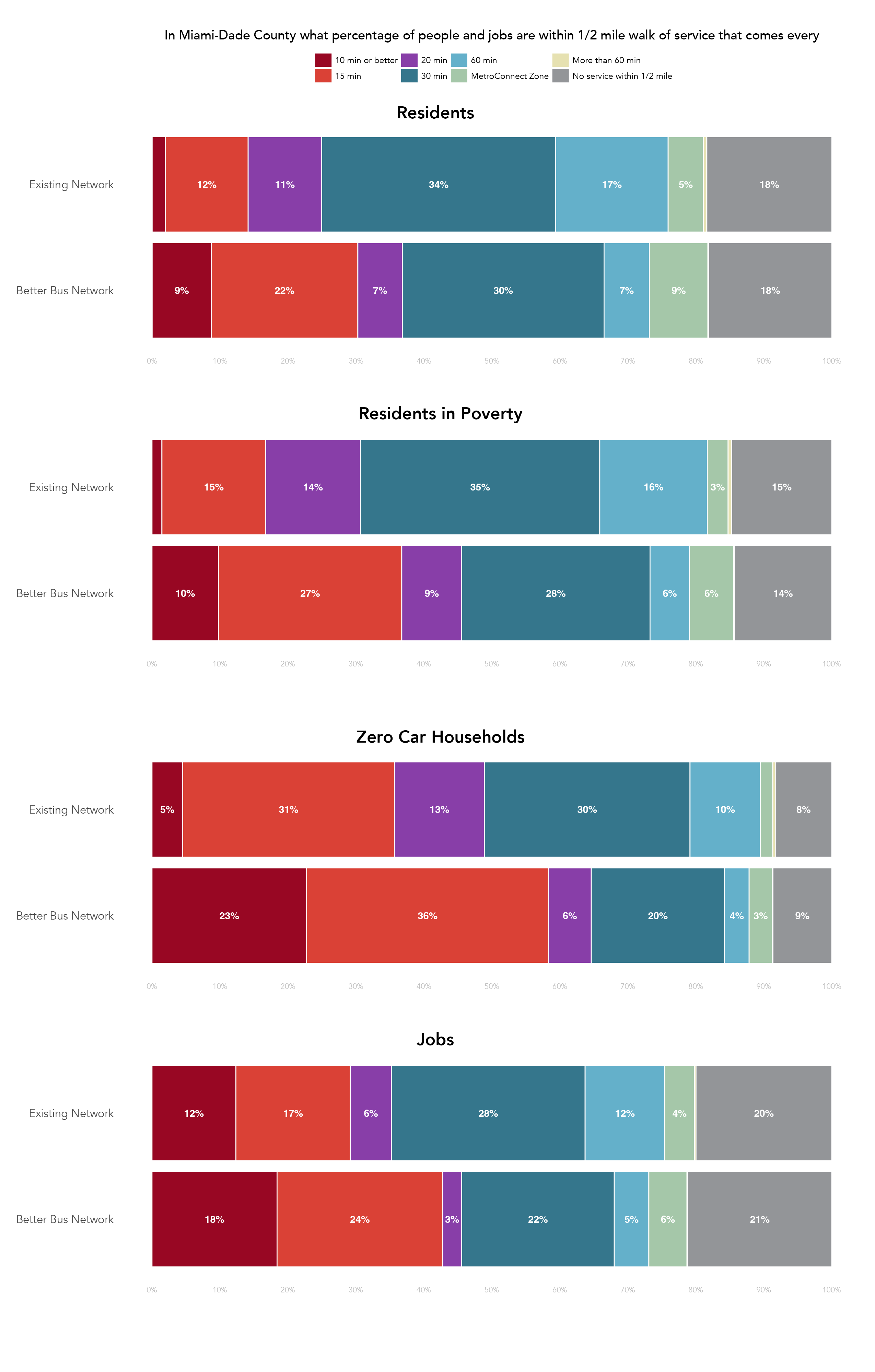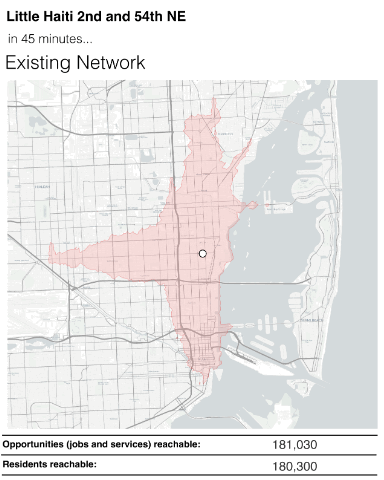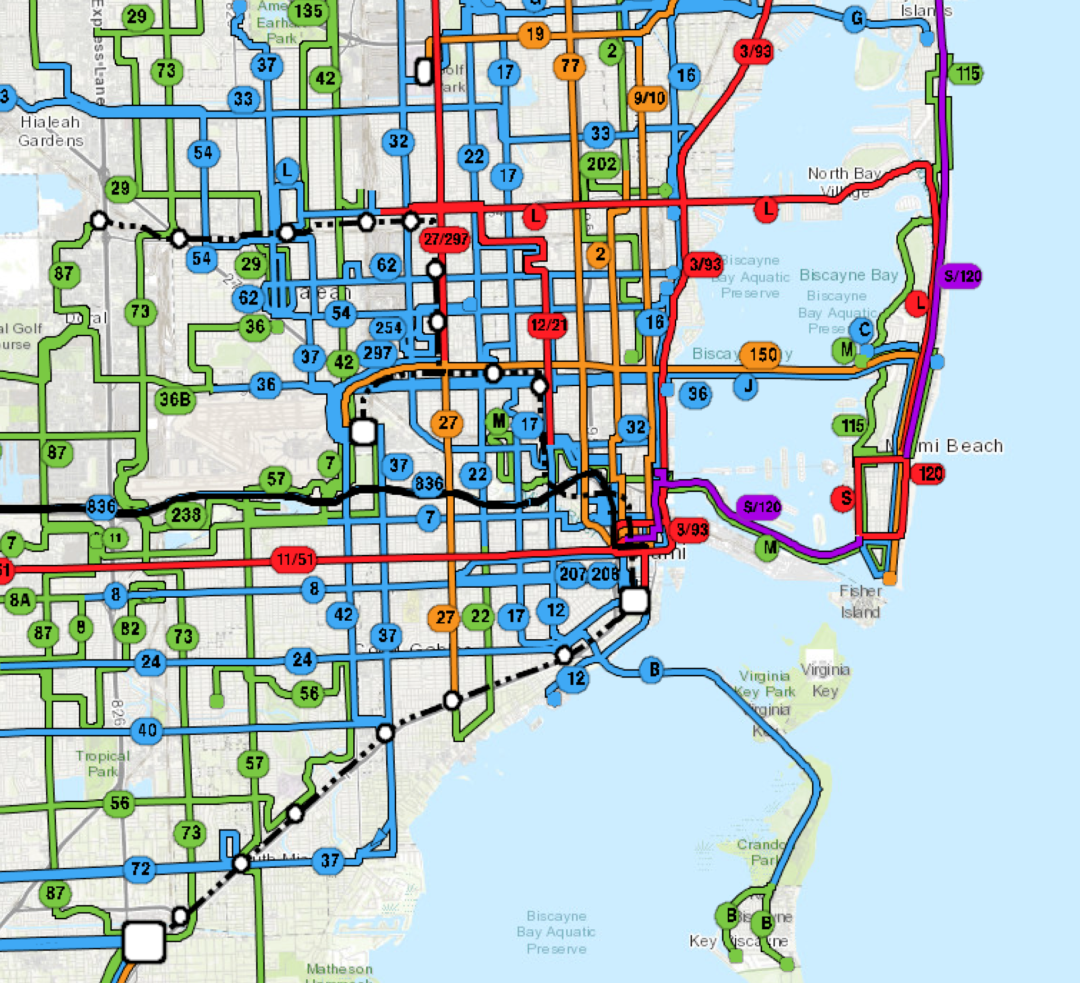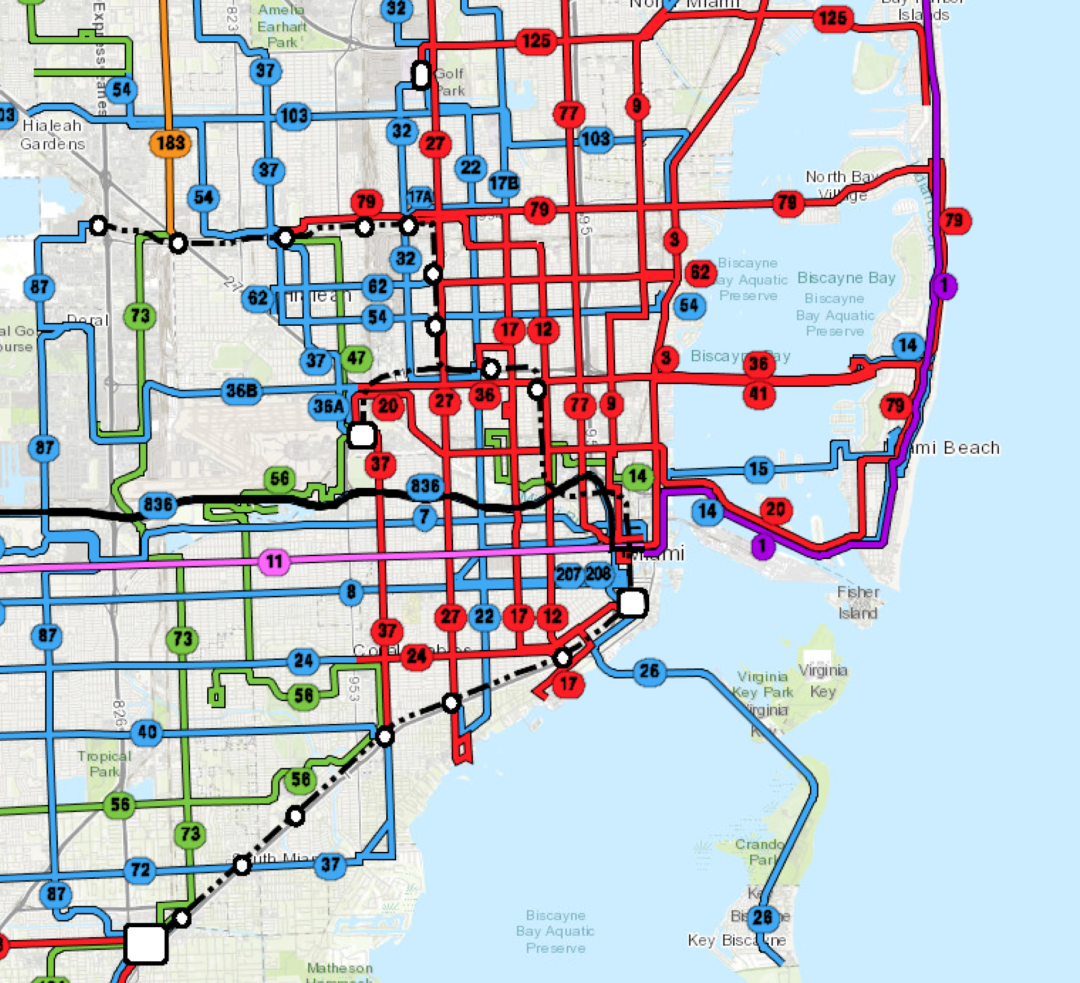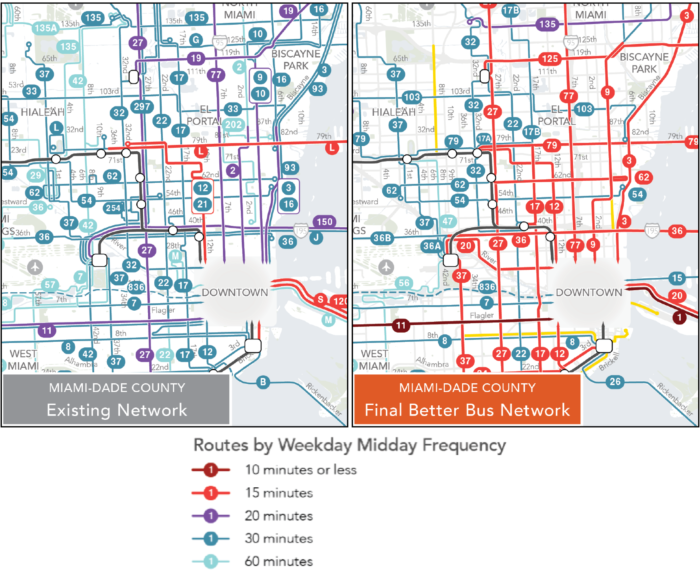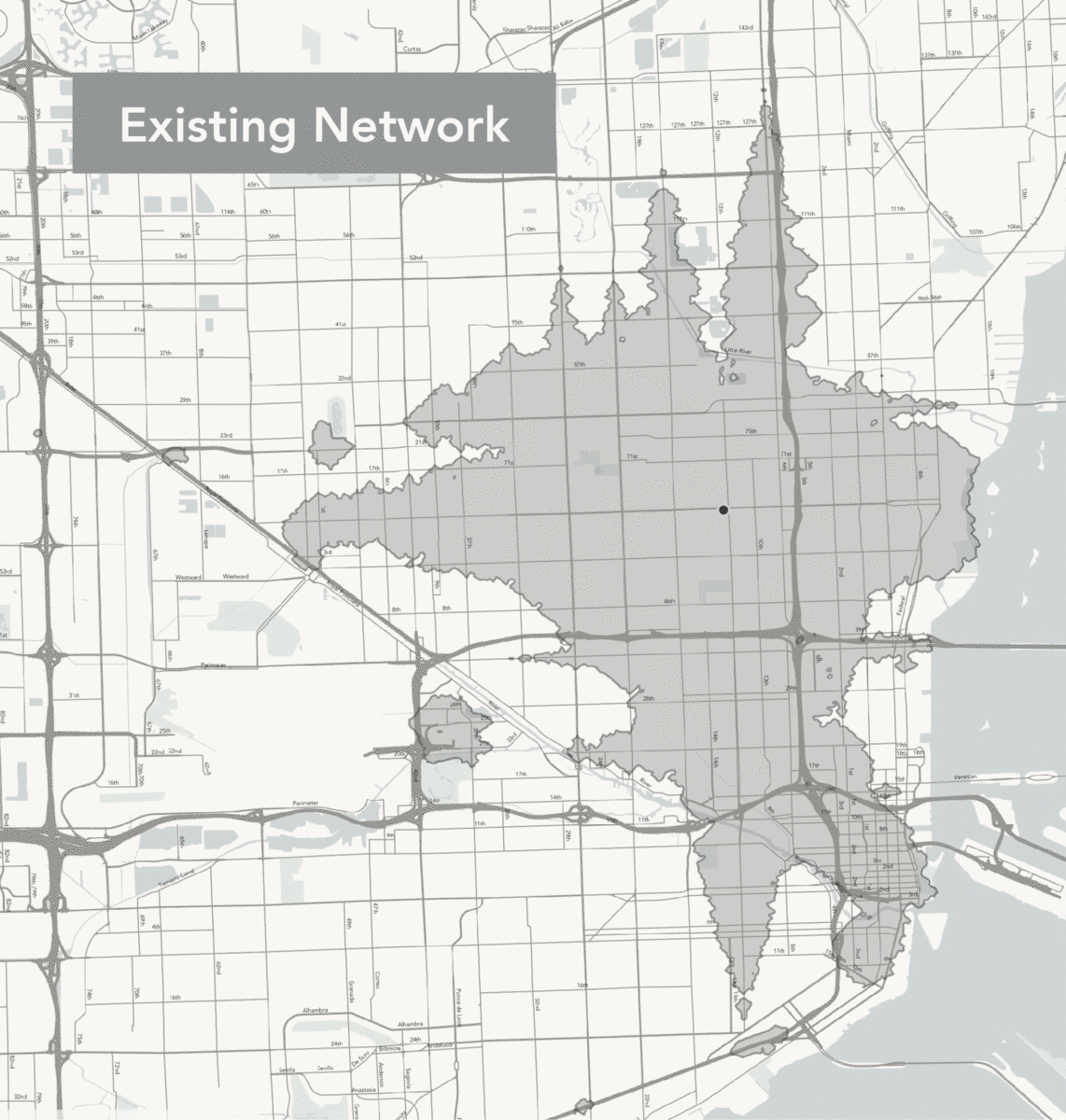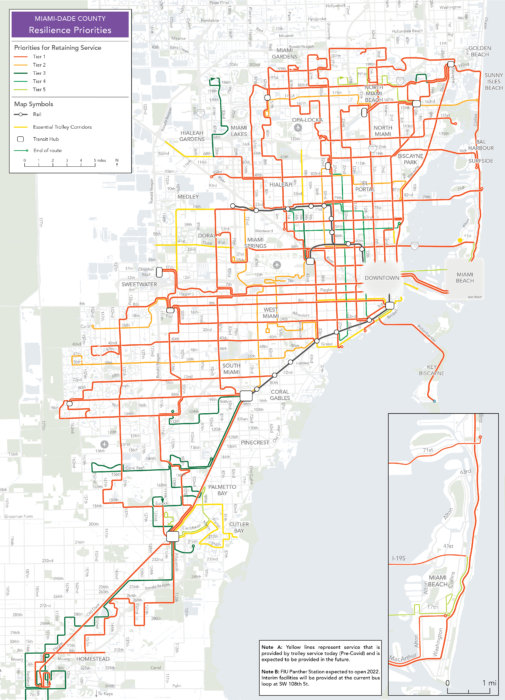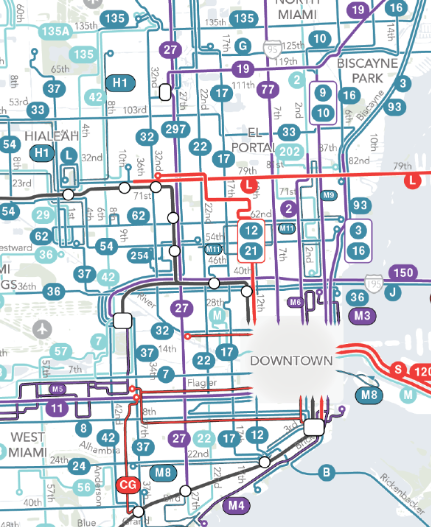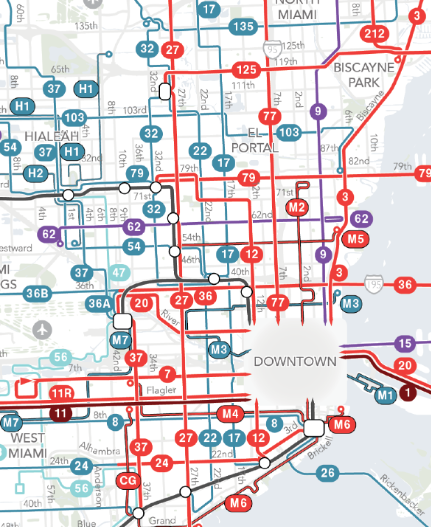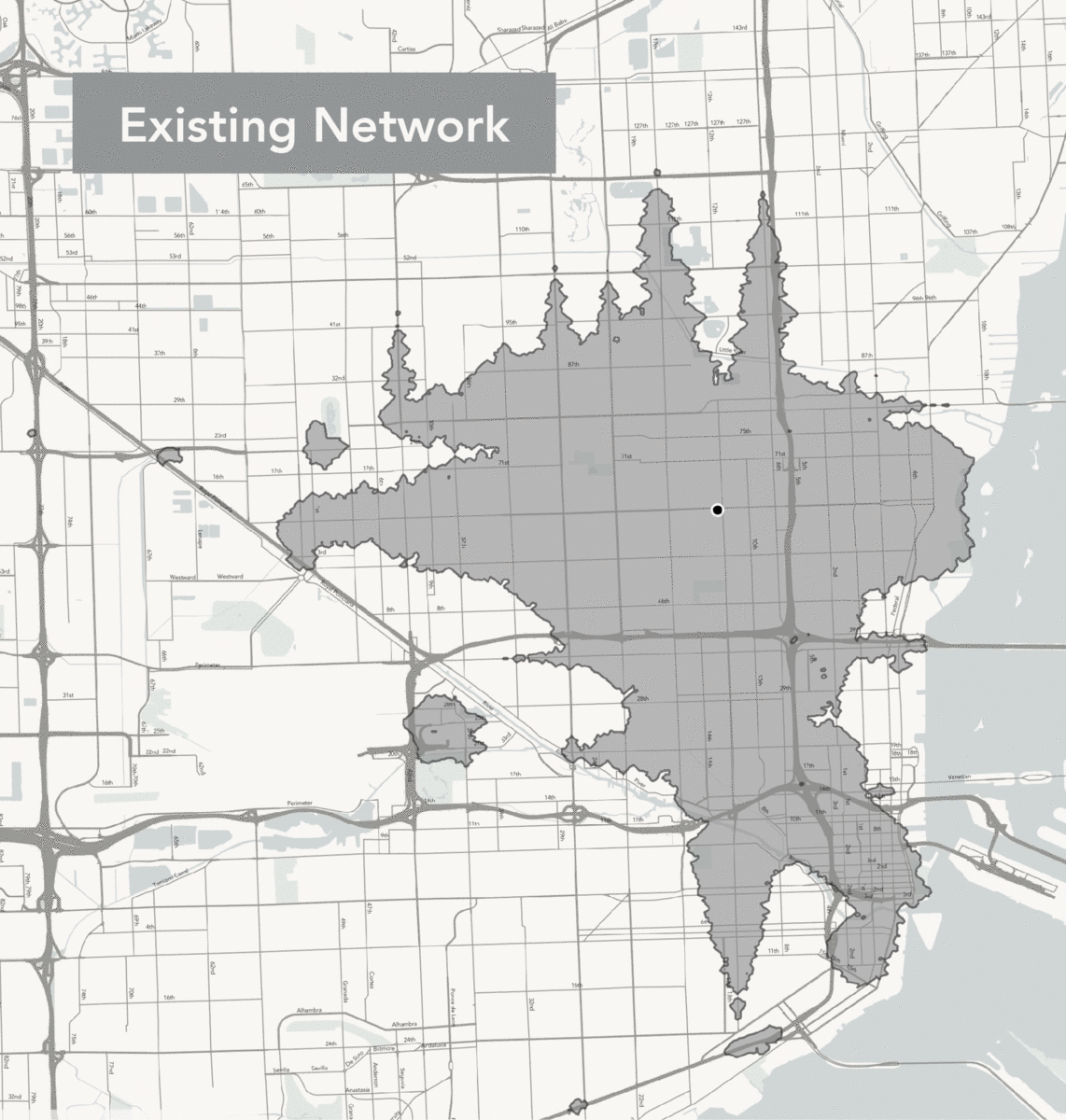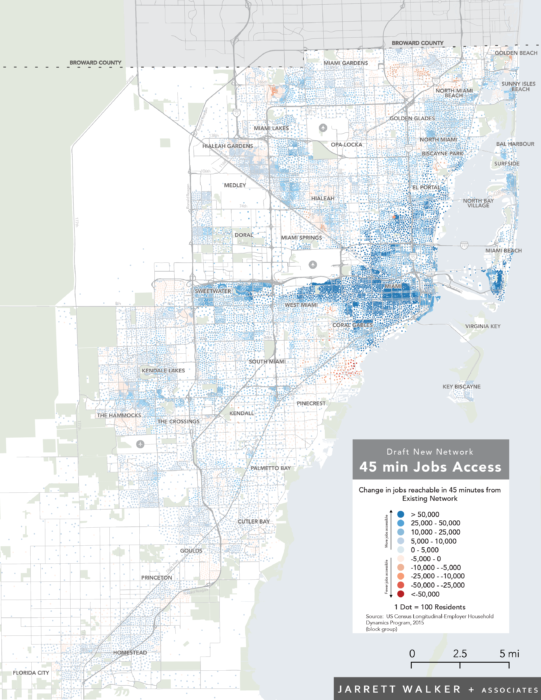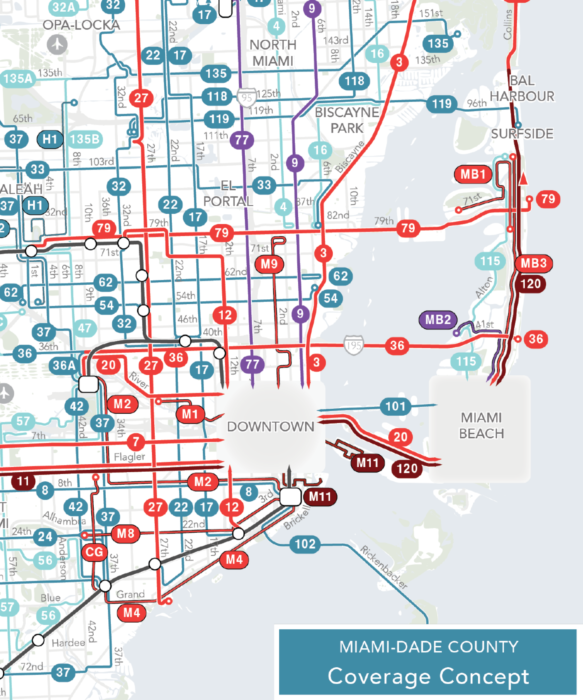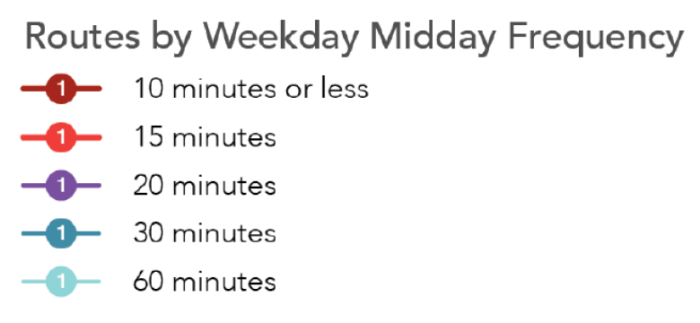[Read in English here.]
El 13 de noviembre, Miami-Dade tuvo la transformación más grande desde que Metrorail empezó hace casi 40 años. No fue una nueva línea de tren, sino un rediseño enorme del sistema de autobús que hace que el servicio sea más útil para más personas y más viajes en todo el condado.
Los autobuses de Miami-Dade operaban en patrones que se habían mantenido iguales por décadas, incluso con el crecimiento del condado y más destinos importantes construidos. Es difícil cambiar el servicio de autobús porque incluso las rutas más ineficientes tienen personas que dependen de ellas y se oponen a cualquier cambio. Por lo tanto, para rediseñar un sistema de autobús, tenemos que mostrar grandes beneficios para que valga la pena. Eso es lo que hace este rediseño.
Nosotros (Jarrett Walker + Associates) ayudamos a liderar conversaciones sobre el Better Bus Network desde nuestro trabajo con Transit Alliance y el Condado de Miami-Dade en el 2019. Llevamos a cabo una conversación alrededor de preguntas claves, conceptos para mostrar lo que significaría enfocarnos en diferentes metas y desarrollamos un Plan Borrador en el 2020. El Plan estaba en el proceso final de participación ciudadana cuando Covid descarriló casi toda la industria del transporte público.
Desde el 2020, el condado siguió trabajando para terminar el plan y publicó el Plan Final en el 2021, con 30% más servicio. Desafortunadamente, la industria del transporte público tuvo problemas con falta de choferes justo después de Covid y el plan se tuvo que reajustar con menos choferes de lo que se habían imaginado. Incluso con los cambios, el nuevo plan sigue ofreciendo excelentes resultados para grandes partes del condado, sus residentes, trabajadores y visitantes.
Con el nuevo rediseño, una nueva cuadrícula de rutas frecuentes cubre grandes partes del condado y provee grandes beneficios. El indicador más simple para medir estas mejoras es el número de personas y trabajos cerca del servicio de transporte público. La tabla a continuación muestra el cambio de residentes y trabajos cerca de servicio según la frecuencia del servicio al mediodía lunes a viernes. El número de residentes que viven cerca de servicio frecuente (cada 15 minutos) aumentó de 380,000 (14% de los residentes del Condado) a 814,000 (30%). El nuevo sistema provee servicio frecuente a cerca del 60% de hogares sin vehículo privado—eso corresponde a 20,000 más hogares sin vehículo privado que están cerca de servicio frecuente. Trabajos cerca de servicio frecuente aumentaron de 29% a 43%.
Una medida clave de cuan útil es el transporte público es el acceso que provee—a cuantos destinos puedes llegar dentro de un tiempo razonable. El siguiente mapa muestra un ejemplo de este cambio desde la Pequeña Haití.
En rojo se muestra la zona que podías acceder con el Sistema Antiguo en 45 minutos. En azul se muestra la zona que puedes acceder con el Better Bus Network. La zona azul es más grande, pero más importante es que ahí hay más destinos: 30% más trabajos y 60% más residentes. Por lo tanto, si vives cerca de este lugar, eres 30% más libre. Si tienes un negocio aquí, ahora tienes acceso a 60% más clientes o 60% más trabajadores.
Podemos medir esto una y otra vez a través en todo el condado y si resumimos los resultados vemos que el residente promedio puede acceder a 28% más trabajos (u otros destinos útiles) en 45 minutos. Este beneficio es aún más grande para residentes de bajo ingreso y minorías. Esto significa que más personas al evaluar un posible viaje, encontrarán que el tiempo de viaje es razonable.
Para leer mas sobre esta medida, consulte aquí.
La otra mejora del nuevo sistema es el gran aumento en la frecuencia de servicio en los fines de semana. Hemos trabajado en planes alrededor de todo Estados Unidos que han aumentado el servicio durante las noches y los fines de semana y suelen ver aumentos en el uso del transporte público. La gente valora flexibilidad y espontaneidad. Todo el mundo quiere tener la habilidad de volver a su casa fuera de las horas laborales tradicionales, 8am a 5pm. Además, las horas pico tradicionales de ir al trabajo son menos importantes hoy ya que más gente trabaja remoto. Aún más importante, personas que trabajan en tiendas o restaurantes usualmente tienen que trabajar los fines de semana. Una ruta que no es frecuente en los fines de semana no está ofreciendo servicio adecuado para las horas pico de estas industrias. En Miami hay muchas, muchas personas que trabajan en estas industrias.
Implementando Grandes Cambios
Igual que en el Condado de Suffolk (Long Island en Nueva York), hemos estado colaborando con Miami-Dade Transit en la implementación. ¿Cómo se hace un cambio tan grande de un día para otro? Meses, a veces años, de planificación nos preparan para un día como este. Grandes partes de la planificación incluyen:
- Coordinación entre los grupos de planificación, programación, comunicación y todo el gobierno del condado para preparar materiales claros de comunicación con el público.
- Comunicación continua con oficiales públicos y municipios.
- Planificación de Title VI, nuevas paradas de autobús, detalles de programación de rutas, preparación de horarios nuevos, mapas del sistema, y mucho más.
- Ensayo de rutas nuevas, revisión de la ubicación de las paradas, trabajo con los choferes para que se aprendan las rutas nuevas, y mucho más
- Contratación de empleados para orientar a los usuarios y explicar los cambios.
Un proyecto así requiere un esfuerzo enorme en equipo y los empleados del condado han trabajo mucho y por bastante tiempo para hacer que este día sea una realidad.
Transit Alliance ha seguido trabajando con el condado para comunicar los cambios del sistema al público y nos alegra poder colaborar en este proceso. Nuestro equipo contribuyó de varias maneras:
- Creamos un nuevo mapa del sistema donde los colores de las rutas representan su frecuencia. Este mapa pronto estará en las paradas de autobús por todo el condado.
- Desarrollamos una herramienta interactiva para ayudar a los usuarios a entender cómo pueden hacer sus viajes en el nuevo sistema.
- Diseñamos los rótulos de paradas de autobús para informar a los usuarios sobre los cambios de rutas en cada parada.
Nos entusiasma ver cómo la gente responderá a este nuevo sistema y esperamos que genere un marco para muchas mejoras al transporte colectivo mientras el condado implementa el plan de largo-plazo (SMART) y otras inversiones en el sistema.

